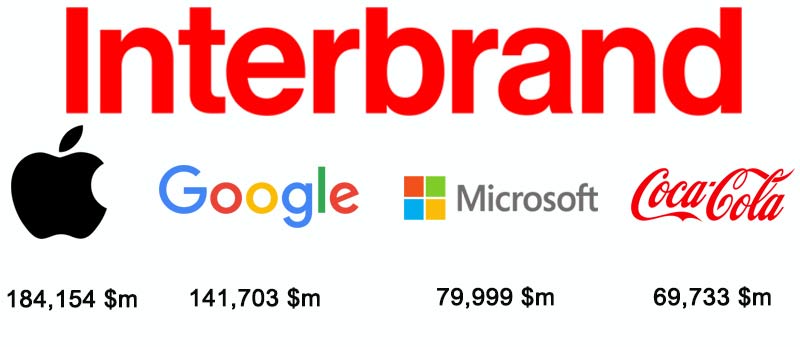About This Course
course Objectives
Course Elements
Grading Elements
Adopt a brand
Individual Course Assignment
30% course grade
Due March 24th on Canvas
Adopt a Brand Process
Individuals select a recognized brand
Search for articles that represent brand activity
Integrate Research on Market Trends and Global Influences
Draw conclusions around competitive capability of the brand
Make recommendation for future brand positioning
Adopt a Brand Summaries
Session 1 Topics
Before We Begin
Brandstorm
What Do You Prefer?
Branding Concept
What is a Brand ?
Branding DNA
Brand-osomes
Branding Elements
Brand Value Elements
Branding Scope
What Can Be Branded
Branding Principle
Effective branding requires Branding elements that:
1.Are integrated around a central theme and work together
2.Match with the customer lifestyle, needs and buying behaviors
3.Fit the image, ethics and reputation of the parent brand or company
BrandStorm
Millennial Car Wars
Lincoln vs Tessla
2015 Lincoln MKZ
The Lincoln Motor Company teams up again with Academy Award™ winner Matthew McConaughey to create Lincoln MKZ and Lincoln MKZ Hybrid ad campaign that will begin airing during high-profile New Year’s Day college football bowl games
Two new TV and online ads will promote Lincoln MKZ and Lincoln MKZ Hybrid midsize sedans, which have given a new direction to the brand with their introduction two years ago
Lincoln’s previous collaboration with McConaughey, the “Live in Your Moment” campaign, fueled early sales success of 2015 Lincoln MKC small premium utility
Lincoln’s NEW Ads
Lincoln MKZ Hybrid Ad
Lincoln MKZ Hybrid Ad
Brand Storm
Create a millennial targeted BRAND Campaign for the Lincoln MKZ
Slogan And messages?
competitive Price Point and value?
utilize current celebrity (Matthew) and other celebrity endorsers to enlist?
Customer Engagement
Brand Hierarchy
Personal Brand Hierarchy
Branding Versus Marketing
Branding and Marketing Play Different Roles
Marketing Focuses on Current Transactions
Brandstorm
Invent a Boutique Hotel Brand
Select existing hotel chain
Decide on a Boutique Hotel concept or theme
Choose a target segment
Select a Unique Name that suggests the Theme
Choose a Slogan / Logo
Design the “Package”
•Décor
•Style
•Layout
•Location{s}
Branding Focuses on Long Term Customer Perceptions
Slogans
Branding Principle
Effective Marketing Requires Integration of Marketing With a Successful Branding Campaign
Integrating Branding and Marketing
Science of Branding 1-3
Brand Leadership
Keys to Brand Leadership
Interbrand
Interbrand 2014
Top 10 Brands on Social Media
Pepsi Overview
onInterbrand
Though the cola category faces challenges, Pepsi has responded positively and proactively. In March 2013, the brand unveiled a new single-serve bottle for its Pepsi trademark portfolio, its first design update since 1996
The brand is addressing key consumer concerns, such as sugar content, via the lower calorie version of its flagship beverage, Pepsi Next
Building a reputation for its environmental efforts, Pepsi was awarded the 2012 Stockholm Industry Water Award for reducing its water consumption.
Delivering a holistic expression of its brand and continuing to engage millions of people around the world through music and digital platforms, Pepsi is making a comeback.
Coca Cola Overview
onInterbrand
Coca-Cola remains the most recognizable—and one of the most valuable—brands in the world. Guided by its 2020 Vision goals around innovation, focus, and creativity, Coca-Cola achieves impressive global presence through standout ad campaigns, bold design, digital savvy, and a simple, universally relevant theme that weaves throughout the brand’s communications: happiness.
During the past year, much of its marketing focused on the global, music-driven “Move to the Beat” campaign for the London Olympic Games,
Coca-Cola not only effectively spread its “Open Happiness” message in more than 200 markets around the world, it also created moments of happiness through the award-winning “Share a Coke” campaign that puts consumers’ names on bottles and cans, and the madcap Coca‑Cola Zero “Unlock the 007 in You” stunt that cross-promoted the James Bond Skyfall movie release
Coca-Cola’s innovation pipeline also extends to its sustainability platform and packaging, promoting healthy living, and reinventing self-serve beverage dispensers with the Coca-Cola Freestyle dispenser.
McDonalds Overview
onInterbrand
Despite a year of change, the golden arches remains highly relevant to 69 million daily consumers through greater choice and localization, consistent global brand expression, and customer experience.
Growing to 34,000 restaurants globally, McDonald’s continues to focus on Asia, where it must find the product sweet spot for consumers across the region, a key to successful expansion and relevancy in the market.
With the modern redesign of its locations, McDonald’s repositioned itself to broaden accessibility overall, stretching into the more upscale quick-service restaurant space while returning to its original pricing strategy of everyday value all around the world, offering a wide variety of menu items at lower price points
Starbucks Overview
onInterbrand
For a brand that’s synonymous with coffee, Starbucks is venturing well beyond its coffee shop model. Key investments this past year include a USD $100 million acquisition of San Francisco-based artisanal baking chain La Boulange, an attempt to improve its food offering and take on rivals encroaching on its coffee business
The brand also paid USD $620 million for the US-based Teavana chain in November 2012, expanding its tea lineup beyond its Tazo brand.
Starbucks also successfully launched its K-Cup (Keurig’s popular system) single-serve tea and coffee for the at-home market in a bid to take on Nestlé’s Nespresso brand.
Whether these strategies will have an impact outside the US remains to be seen, especially given the brand’s ambition to grow its store footprint in the Asia Pacific region. Having added 516 new stores in Asia Pacific in the past year and revenue up 22 percent, the strategy appears to be paying off.
The most checked-in brand in the world according to Facebook, Starbucks fans are particularly engaged in Indonesia and the Philippines. In the hot seat over corporate taxes in the UK, it remains to be seen whether this will have a long-term impact on the brand.
Google Overview
onInterbrand
If Google’s stream of innovation is anything to go by, there’s clearly something in the water in Mountain View, California. From making noise for its self-driving cars to taking advantage of Apple’s Maps fumble to releasing the straight-out-of-Star Trek Google Glass, the company once described as a search engine has found its voice as a true leader of the technology age
However, the year hasn’t been perfect for the company, with anti-trust questions being raised in the US and Europe, and its involvement in the PRISM scandal flying in the face of its “don’t be evil” corporate motto
Google’s search engine is still outperforming those of rivals Yahoo! and Microsoft, and experimental forays like Project Loon, which aims to deliver 3G internet to remote areas via solar-powered balloons in the stratosphere, continue to remind us that Google is more than a search engine.
Strategic Brand Management
1. Establish Brand Position
& Values
2. Brand Marketing Programs
3. Performance Measure
4. Equity Growth
Commodity Branding
Branding Brief 1-2
What Defines a Commodity
Some Commodity Brands However Do Show Brand Success
Commodity Branding Strategies
What Makes Branding Places Unique
How is a Place Defined

